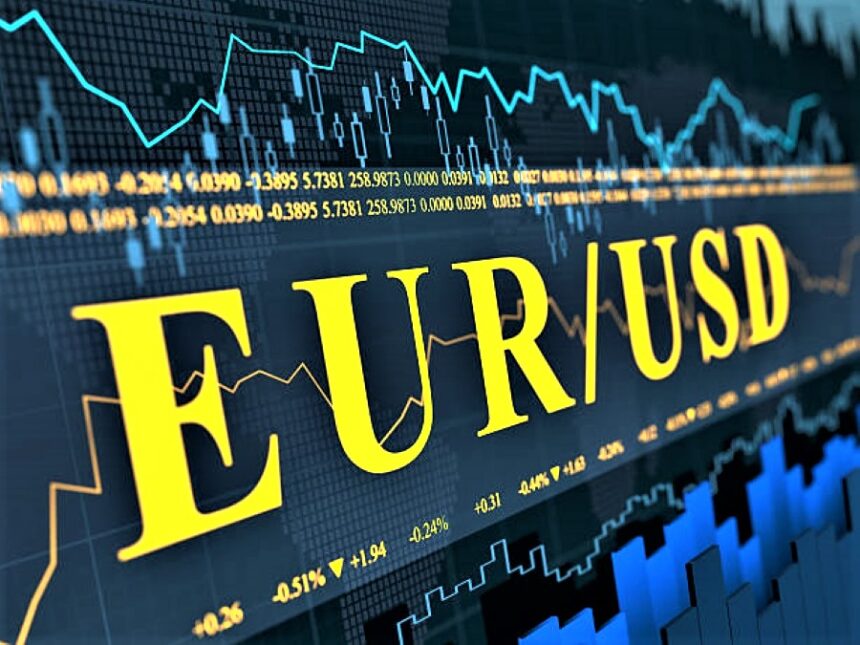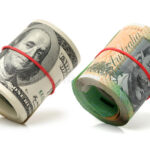EURUSD pair witnessed a sharp decline at the start of the week as the long-anticipated EU-US trade agreement failed to deliver a market-friendly outcome. While the pact reduced previously proposed tariffs, it introduced new obligations for the European Union, triggering a bearish reaction from Euro traders. At the same time, a firm US Dollar underpinned by resilient labor data and investor expectations for a hawkish Federal Reserve added pressure to the currency pair.
EU-US Trade Pact Offers Little Relief to Euro
The highly anticipated EU-US trade agreement was signed over the weekend by European Commission President Ursula von der Leyen and US President Donald Trump. The final deal set a 15% tariff on Eurozone exports, including automobiles and pharmaceuticals down from the 30% previously threatened, but far from the zero-tariff aspirations initially floated by Brussels.
In exchange, the EU committed to invest EUR 600 billion into the US economy and pledged to purchase EUR 750 billion worth of US natural gas and military equipment. While von der Leyen claimed it was “the best deal we could get,” market reaction was lukewarm at best. The Euro’s initial pop on the news quickly reversed, and sentiment deteriorated as investors analyzed the long-term implications of these concessions.
The fact that Europe must increase energy and defense spending toward the US while still facing significant export tariffs was viewed as a structural disadvantage for the Eurozone economy, deepening the bearish tone surrounding the EUR.
EURUSD Posts Sharpest Daily Drop in Months
The Euro opened the week on a bearish note and extended losses into early European trading. The pair fell from a high of 1.1770 to a low of 1.1650, marking a drop of nearly 120 pips its worst single-day performance in several months.
This move reflects both technical rejection at key resistance levels and fundamental disappointment in the trade agreement. The decline is exacerbated by increasing bets on continued strength in the US Dollar, particularly with the Federal Reserve’s policy decision looming midweek.
US Dollar Benefits from Mixed but Supportive Macro Data
While Friday’s US Durable Goods Orders revealed a 9.3% decline, the figure was still better than the expected 10.8% drop, giving the Dollar a modest tailwind. The core Durable Goods, which exclude transportation, actually rose by 0.2%, surprising to the upside.
This came on the back of stronger-than-expected Initial Jobless Claims data released earlier in the week, with claims falling for the sixth consecutive week to their lowest in three months. These figures underscore the underlying resilience of the US labor market, supporting the Federal Reserve’s cautious stance on cutting interest rates further.
While recession fears remain, the data gives the Fed breathing room to hold rates steady and maintain a “higher for longer” stance, which is bullish for the Dollar and bearish for gold and the Euro.
All Eyes on Fed Decision and Powell’s Commentary
The FOMC meeting, which begins Tuesday and concludes with a policy announcement and press conference on Wednesday, is expected to keep interest rates unchanged at 4.25%–4.50%. However, market participants will closely scrutinize Fed Chair Jerome Powell’s tone and guidance.
A key factor is whether recent economic data and progress on trade deals change the Fed’s cautious view or encourage it to shift more decisively toward rate cuts. If Powell emphasizes ongoing inflation concerns or references geopolitical stability from trade pacts, the Dollar may strengthen further—placing more pressure on EURUSD.
Eurozone’s Economic Outlook Faces Additional Pressure
Beyond the trade deal, the Eurozone is grappling with its own set of economic challenges. Growth across the bloc remains sluggish, inflation continues to miss targets, and manufacturing data has been tepid.
With Germany the region’s economic engine reporting weak industrial production and declining exports, investors are worried that Europe’s economic slowdown may deepen if US tariffs remain in place. Additionally, the ECB has shown limited willingness to pivot toward tightening, creating further policy divergence between the Fed and ECB.
This divergence is a key bearish driver for the Euro, as higher yields in the US attract capital flows away from Europe, weakening EURUSD in the process.
Thin Data Calendar Keeps Focus on Macro Themes
Monday’s economic calendar was relatively light, with only the Dallas Fed Manufacturing Business Index offering guidance. As expected, the reading provided little market-moving impact, with traders instead looking ahead to key events:
Tuesday: US Consumer Confidence
Wednesday: FOMC Rate Decision, Fed Press Conference, US Q2 GDP (first estimate)
Friday: July Nonfarm Payrolls (NFP) report
These releases will serve as major catalysts for both the Dollar and the Euro. Any surprises—particularly in GDP or NFP—could either reinforce or counter the Fed’s current policy narrative.
Technical Breakdown: EURUSD Bearish Below 1.1700
From a technical standpoint, EURUSD failure at the 1.1770 resistance and subsequent breach of the 1.1700 support zone confirms a bearish shift. The next downside levels to watch include:
1.1625: Minor support from early July
1.1580: Psychological level and prior breakout zone
1.1510: Multi-week low and potential target if Fed hawkishness persists
Momentum indicators such as the RSI and MACD are turning lower, while short-term moving averages suggest growing bearish momentum. Only a reclaiming of 1.1720–1.1750 would ease the selling pressure.
Investor Sentiment: Risk-Off for Euro, Risk-On for Dollar
The broader shift in global sentiment from risk aversion to cautious optimism may seem neutral at first glance, but in this case, it benefits the US Dollar at the expense of the Euro. Investors are looking to the US as a relative outperformer, buoyed by strong job data, better-than-expected macro releases, and a more confident Fed.
In contrast, Europe’s internal vulnerabilities, its costly commitments under the trade deal, and a slower economic rebound have undermined EUR bullish sentiment. Until data or central bank rhetoric shifts, this risk divergence is likely to persist.
Conclusion: EURUSD Faces Critical Test Ahead of Fed Decision
The EURUSD pair faces increasing downward pressure as structural and cyclical factors align in favor of the US Dollar. The EU-US trade agreement, far from being a win for the Eurozone, has introduced new economic burdens without resolving key tariff challenges. Coupled with Fed hawkishness and strong US data, this has created a perfect storm for EURUSD to decline further.
Wednesday’s FOMC meeting and Friday’s NFP report will be pivotal. Unless Powell unexpectedly signals rate cuts or US data weakens sharply, EURUSD is likely to remain on the defensive, potentially testing lower support levels in the coming days.
Disclaimer: This blog is for informational purposes only and does not constitute financial advice. Always conduct your own research and consult a professional advisor before making investment decisions.
[sc_fs_multi_faq headline-0=”h2″ question-0=”Why did the EUR/USD pair fall after the EU-US trade agreement?” answer-0=”The Euro fell because the trade deal introduced new obligations for Europe without eliminating tariffs entirely. While the 15% rate was better than 30%, markets had hoped for a tariff-free arrangement. The pact also obligates Europe to invest heavily in the US, weakening its own economic prospects.” image-0=”” headline-1=”h2″ question-1=”What is the Fed expected to do at this week’s meeting?” answer-1=”The Fed is widely expected to leave interest rates unchanged, but all eyes will be on Jerome Powell’s comments. If he hints that rates will remain high due to inflation or economic resilience, the US Dollar may strengthen further.” image-1=”” headline-2=”h2″ question-2=”How does the Fed’s stance affect the EUR/USD pair?” answer-2=”If the Fed remains hawkish, meaning it intends to keep rates high, the Dollar gains strength, putting downward pressure on EUR/USD. On the other hand, dovish guidance (favoring cuts) may weaken the USD and support a EUR/USD recovery.” image-2=”” count=”3″ html=”true” css_class=””]









